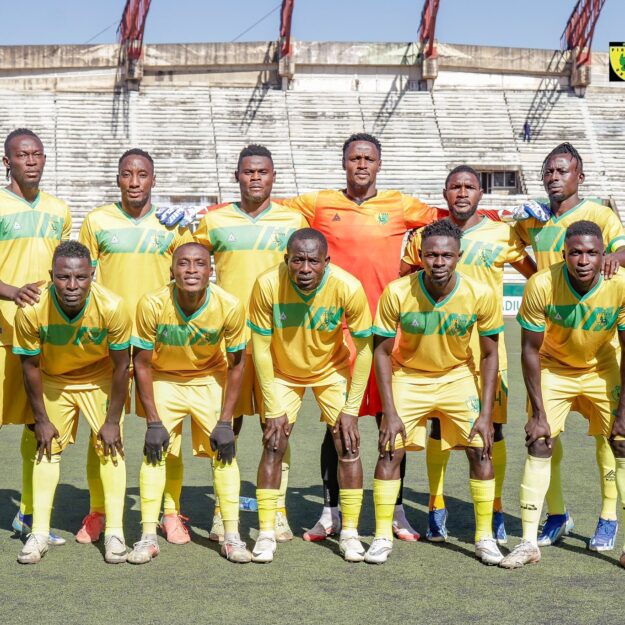
On January 3, 2020, Iran’s most powerful military commander, General Qasem Soleimani was confirmed dead. He was killed by a US air strike in Iraq. The 62-year old spearheaded Iranian military operations in the Middle East as head of Iran’s elite Quds Force. He was killed at Baghdad airport, alongside local Iran-backed militias, early on Friday in a strike ordered by US President Donald Trump.
Qassem Suleimani also known as the ‘Shadow Commander’ was the Iranian operative who had been reshaping the Middle East. He was a small man, with silver hair, a close-cropped beard, and a look of intense self-containment.
Suleimani was born in Rabor, an impoverished mountain village in eastern Iran.
As a young man, Suleimani gave few signs of greater ambition. According to Ali Alfoneh, an Iran expert at the Foundation for Defense of Democracies, he had only a high-school education, and worked for Kerman’s municipal water department. But it was a revolutionary time, and the country’s gathering unrest was making itself felt.
Away from work, Suleimani spent hours lifting weights in local gyms, which, like many in the Middle East, offered physical training and inspiration for the warrior spirit. During Ramadan, he attended sermons by a travelling preacher named Hojjat Kamyab—a protégé of Khamenei’s—and it was there that he became inspired by the possibility of Islamic revolution.
In 1979, when Suleimani was twenty-two, the Shah fell to a popular uprising led by Ayatollah Ruhollah Khomeini in the name of Islam. Swept up in the fervor, Suleimani joined the Revolutionary Guard, a force established by Iran’s new clerical leadership to prevent the military from mounting a coup. Though he received little training—perhaps only a forty-five-day course—he advanced rapidly. As a young guardsman, Suleimani was dispatched to northwestern Iran, where he helped crush an uprising by ethnic Kurds.
Suleimani earned a reputation for bravery and élan, especially as a result of reconnaissance missions he undertook behind Iraqi lines. He returned from several missions bearing a goat, which his soldiers slaughtered and grilled. “Even the Iraqis, our enemy, admired him for this,” a former Revolutionary Guard officer who defected to the United States said.
In 1998, Suleimani took command of the Quds Force, and in that time he had sought to reshape the Middle East in Iran’s favor, working as a power broker and as a military force: assassinating rivals, arming allies, and, for most of a decade, directing a network of militant groups that killed hundreds of Americans in Iraq.
American and Argentine officials believe that the Iranian regime helped Hezbollah orchestrate the bombing of the Israeli Embassy in Buenos Aires in 1992, which killed twenty-nine people, and the attack on the Jewish center in the same city two years later, which killed eighty-five.
Suleimani built the Quds Force into an organization with extraordinary reach, with branches focussed on intelligence, finance, politics, sabotage, and special operations. With a base in the former U.S. Embassy compound in Tehran, the force has between ten thousand and twenty thousand members, divided between combatants and those who train and oversee foreign assets. Its members are picked for their skill and their allegiance to the doctrine of the Islamic Revolution (as well as, in some cases, their family connections).
According to the Israeli newspaper Israel Hayom, fighters are recruited throughout the region, trained in Shiraz and Tehran, indoctrinated at the Jerusalem Operation College, in Qom, and then “sent on months-long missions to Afghanistan and Iraq to gain experience in field operational work. They usually travel under the guise of Iranian construction workers.”
After taking command, Suleimani strengthened relationships in Lebanon, with Mughniyeh and with Hassan Nasrallah, Hezbollah’s chief. By then, the Israeli military had occupied southern Lebanon for sixteen years, and Hezbollah was eager to take control of the country, so Suleimani sent in Quds Force operatives to help. “They had a huge presence—training, advising, planning,” Crocker said.
In 2000, the Israelis withdrew, exhausted by relentless Hezbollah attacks. It was a signal victory for the Shiites, and, Crocker said, “another example of how countries like Syria and Iran can play a long game, knowing that we can’t.”
Since then, the regime has given aid to a variety of militant Islamist groups opposed to America’s allies in the region, such as Saudi Arabia and Bahrain. The help has gone not only to Shiites but also to Sunni groups like Hamas—helping to form an archipelago of alliances that stretches from Baghdad to Beirut.
“No one in Tehran started out with a master plan to build the Axis of Resistance, but opportunities presented themselves,” a Western diplomat in Baghdad said. “In each case, Suleimani was smarter, faster, and better resourced than anyone else in the region. By grasping at opportunities as they came, he built the thing, slowly but surely.”
The U.S. Department of the Treasury had sanctioned Suleimani for his role in supporting the Assad regime, and for abetting terrorism. And yet he had remained mostly invisible to the outside world, even as he ran agents and directs operations.
“Suleimani is the single most powerful operative in the Middle East today,” John Maguire, a former C.I.A. officer in Iraq, said, “and no one’s ever heard of him.”
When Suleimani appeared in public—often to speak at veterans’ events or to meet with Khamenei—he carried himself inconspicuously and rarely raised his voice, exhibiting a trait that Arabs call khilib, or understated charisma.
“He is so short, but he has this presence,” a former senior Iraqi official said. “There will be ten people in a room, and when Suleimani walks in he doesn’t come and sit with you. He sits over there on the other side of room, by himself, in a very quiet way. Doesn’t speak, doesn’t comment, just sits and listens. And so of course everyone is thinking only about him.”
The early months of 2013, marked a low point for the Iranian intervention in Syria. Assad was steadily losing ground to the rebels, who are dominated by Sunnis, Iran’s rivals. If Assad fell, the Iranian regime would lose its link to Hezbollah, its forward base against Israel. In a speech, one Iranian cleric said, “If we lose Syria, we cannot keep Tehran.”
Although the Iranians were severely strained by American sanctions, imposed to stop the regime from developing a nuclear weapon, they were unstinting in their efforts to save Assad. Among other things, they extended a seven-billion-dollar loan to shore up the Syrian economy.
“I don’t think the Iranians are calculating this in terms of dollars,” a Middle Eastern security official said. “They regard the loss of Assad as an existential threat.” For Suleimani, saving Assad seemed a matter of pride, especially if it meant distinguishing himself from the Americans. “Suleimani told us the Iranians would do whatever was necessary,” said a former Iraqi leader. “He said, ‘We’re not like the Americans. We don’t abandon our friends.’ ”
In 2012, Suleimani asked Kurdish leaders in Iraq to allow him to open a supply route across northern Iraq and into Syria. For years, he had bullied and bribed the Kurds into coöperating with his plans, but this time they rebuffed him. Worse, Assad’s soldiers wouldn’t fight—or, when they did, they mostly butchered civilians, driving the populace to the rebels.
“The Syrian Army is useless!” Suleimani told an Iraqi politician. He longed for the Basij, the Iranian militia whose fighters crushed the popular uprisings against the regime in 2009. “Give me one brigade of the Basij, and I could conquer the whole country,” he said.
In August, 2012, anti-Assad rebels captured forty-eight Iranians inside Syria. Iranian leaders protested that they were pilgrims, come to pray at a holy Shiite shrine, but the rebels, as well as Western intelligence agencies, said that they were members of the Quds Force. In any case, they were valuable enough so that Assad agreed to release more than two thousand captured rebels to have them freed. And then Shateri was killed.
Finally, Suleimani began flying into Damascus frequently so that he could assume personal control of the Iranian intervention. “He’s running the war himself,” an American defense official said.
In Damascus, he was said to work out of a heavily fortified command post in a nondescript building, where he had installed a multinational array of officers: the heads of the Syrian military, a Hezbollah commander, and a coördinator of Iraqi Shiite militias, which Suleimani mobilized and brought to the fight. If Suleimani couldn’t have the Basij, he settled for the next best thing: Brigadier General Hossein Hamedani, the Basij’s former deputy commander. Hamedani, another comrade from the Iran-Iraq War, was experienced in running the kind of irregular militias that the Iranians were assembling, in order to keep on fighting if Assad fell.
Late 2012, Western officials began to notice a sharp increase in Iranian supply flights into the Damascus airport. Instead of a handful a week, planes were coming every day, carrying weapons and ammunition—“tons of it,” the Middle Eastern security official said—along with officers from the Quds Force.
According to American officials, the officers coordinated attacks, trained militias, and set up an elaborate system to monitor rebel communications. They also forced the various branches of Assad’s security services—designed to spy on one another—to work together. The Middle Eastern security official said that the number of Quds Force operatives, along with the Iraqi Shiite militiamen they brought with them, reached into the thousands. “They’re spread out across the entire country,” he told me.
A turning point came in April 2013, after rebels captured the Syrian town of Qusayr, near the Lebanese border. To retake the town, Suleimani called on Hassan Nasrallah, Hezbollah’s leader, to send in more than two thousand fighters. It wasn’t a difficult sell.
Qusayr sits at the entrance to the Bekaa Valley, the main conduit for missiles and other matériel to Hezbollah; if it was closed, Hezbollah would find it difficult to survive. Suleimani and Nasrallah were old friends, having coöperated for years in Lebanon and in the many places around the world where Hezbollah operatives had performed terrorist missions at the Iranians’ behest.
According to Will Fulton, an Iran expert at the American Enterprise Institute, Hezbollah fighters encircled Qusayr, cutting off the roads, then moved in. Dozens of them were killed, as were at least eight Iranian officers. On June 5th 2013, the town fell. “The whole operation was orchestrated by Suleimani,” Maguire, who is still active in the region, said. “It was a great victory for him.”
Despite all of Suleimani’s rough work, his image among Iran’s faithful is that of an irreproachable war hero—a decorated veteran of the Iran-Iraq War, in which he became a division commander while still in his twenties. In public, he is almost theatrically modest.
During a recent appearance, he described himself as “the smallest soldier,” and, according to the Iranian press, rebuffed members of the audience who tried to kiss his hand. His power comes mostly from his close relationship with Khamenei, who provides the guiding vision for Iranian society. The Supreme Leader, who usually reserves his highest praise for fallen soldiers, had referred to Suleimani as “a living martyr of the revolution.”
Suleimani was a hard-line supporter of Iran’s authoritarian system. In July, 1999, at the height of student protests, he signed, with other Revolutionary Guard commanders, a letter warning the reformist President Mohammad Khatami that if he didn’t put down the revolt the military would—perhaps deposing Khatami in the process. “Our patience has run out,” the generals wrote. The police crushed the demonstrators, as they did again, a decade later.
Iran’s government is intensely fractious, and there are many figures around Khamenei who help shape foreign policy, including Revolutionary Guard commanders, senior clerics, and Foreign Ministry officials. But Suleimani was given a remarkably free hand in implementing Khamenei’s vision.
“He has ties to every corner of the system,” Meir Dagan, the former head of Mossad, said. “He is what I call politically clever. He has a relationship with everyone.” Officials described him as a believer in Islam and in the revolution; while many senior figures in the Revolutionary Guard have grown wealthy through the Guard’s control over key Iranian industries, Suleimani was endowed with a personal fortune by the Supreme Leader. “He’s well taken care of,” Maguire said.
Over the years, the Quds Force has built an international network of assets, some of them drawn from the Iranian diaspora, who can be called on to support missions. “They’re everywhere,” a second Middle Eastern security official said.
In 2010, according to Western officials, the Quds Force and Hezbollah launched a new campaign against American and Israeli targets—in apparent retaliation for the covert effort to slow down the Iranian nuclear program, which has included cyber attacks and assassinations of Iranian nuclear scientists.
Since then, Suleimani orchestrated attacks in places as far flung as Thailand, New Delhi, Lagos, and Nairobi—at least thirty attempts between 2011 and 2013. The most notorious was a scheme, in 2011, to hire a Mexican drug cartel to blow up the Saudi Ambassador to the United States as he sat down to eat at a restaurant a few miles from the White House.
The cartel member approached by Suleimani’s agent turned out to be an informant for the U.S. Drug Enforcement Administration. (The Quds Force appears to be more effective close to home, and a number of the remote plans have gone awry.)
Still, after the plot collapsed, two former American officials told a congressional committee that Suleimani should be assassinated. “Suleimani travels a lot,” one said. “He is all over the place. Go get him. Either try to capture him or kill him.” In Iran, more than two hundred dignitaries signed an outraged letter in his defense; a social-media campaign proclaimed, “We are all Qassem Suleimani.”
Suleimani’s greatest achievement may be persuading his proxies in the Iraqi government to allow Iran to use its airspace to fly men and munitions to Damascus.
General James Mattis, who until March 2013, was the commander of all American military forces in the Middle East, said that without this aid the Assad regime would have collapsed months ago.
The flights were overseen by the Iraqi transportation minister, Hadi al-Amri, who is an old ally of Suleimani’s—the former head of the Badr Brigade, and a soldier on the Iranian side in the Iran-Iraq War.
In an interview in Baghdad, Amri denied that the Iranians were using Iraqi airspace to send weapons. But he made clear his affection for his former commander. “I love Qassem Suleimani!” he said, pounding the table. “He is my dearest friend.”
For Suleimani, giving up Assad meant abandoning the project of expansion that has occupied him for twenty-one years. In a speech before the Assembly of Experts—the clerics who choose the Supreme Leader—he spoke about Syria in fiercely determined language.
“We do not pay attention to the propaganda of the enemy, because Syria is the front line of the resistance and this reality is undeniable,’’ he said. “We have a duty to defend Muslims because they are under pressure and oppression.” Suleimani was fighting the same war, against the same foes, that he’d been fighting his entire life; for him, it seemed, the compromises of statecraft could not compare with the paradise of the battlefield. “We will support Syria to the end,” he said.
Most recently, US having declared commander Suleimani and the Quds Force terrorists and held them responsible for the deaths of hundreds of US personnel, eliminated him on the orders of Donald Trump.
A statement from the Pentagon said Gen Soleimani “was actively developing plans to attack American diplomats and service members in Iraq and throughout the region”. “This strike was aimed at deterring future Iranian attack plans,” it added.
It was reported that commander Soleimani had approved the attacks on the American embassy in Baghdad in response to U.S. airstrikes in Iraq and Syria on 29 December 2019.
Soleimani was posthumously promoted to lieutenant general. He was suceeded by Esmail Ghaani as commander of the Quds Force.
Iran’s Supreme Leader Ayatollah Ali Khamenei said “severe revenge awaits the criminals” behind the attack. He also announced three days of national mourning.
You may be interested

FA Cup: Ndidi Returns As Maguire’s Late Strike Vs Leicester Sends United Into 5th Round
Webby - February 7, 2025A late Harry Maguire strike earned Manchester United a 2-1 win against Leicester City in the Emirates FA Cup fourth…
Martinelli Ruled Out For More Than One Month With Hamstring Injury
Webby - February 7, 2025Arsenal winger Gabriel Martinelli faces more than a month out after suffering a hamstring injury during his side’s Carabao Cup…

Adams To Be Sidelined With Thigh Injury
Webby - February 7, 2025Sevilla forward Jerome Adams is expected to be sidelined for a significant period of time due to a thigh injury.…


















![American Pastor, David Wilson Seen Eating The Box Of Woman Who Isn’t His Wife [Video]](https://onlinenigeria.com/wp-content/uploads/2019/10/american-pastor-david-wilson-seen-eating-the-box-of-woman-who-isnt-his-wife-video-150x150.jpg)









Leave a Comment